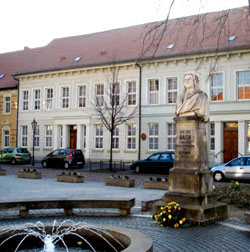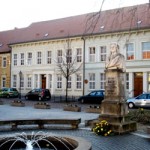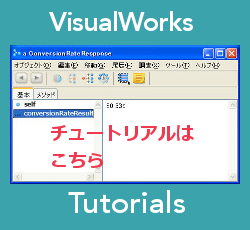Innovative Applications Developed in Cincom VisualWorks® Help Historians Find Bach’s Home
Johann Sebastian Bach, the famed composer whose celebrated works include the Toccata and Fugue in D Minor and the Brandenburg concertos, lived in Cöthen, Germany, from 1717 until 1723. The town of Cöthen wanted to find out where Bach had lived, in order to promote tourism. The problem was that no one knew exactly which house Bach had occupied.

The Bach House
The Bach-Gesellschaft, a Bach society, initiated a project to uncover everything they could about Bach’s time in Cöthen, and specifically to locate his residence. Realizing that this study would not only require research but also some sophisticated technology, the project leaders hired Georg Heeg, a consultant working on Smalltalk projects throughout central Europe. “The standard method is to search for a document with an address, but that wasn’t working.” Heeg says. “Several teams had searched through the archives again and again, from 1880 to today. A piece of paper with Bach’s address just didn’t exist.” Where old-fashioned research techniques failed, Heeg thought Cincom VisualWorks® could help. “We could input a variety of data into a computer and run algorithms to find specific information.”
Heeg’s primary approach was exclusion. His plan looked at all of the houses to determine where Bach could not have lived. According to Heeg, one of the remaining houses must be the Bach residence. Heeg first searched all available historical data on Bach and the other residents of Cöthen. They copied all Cöthen home tax data into spreadsheets and they scanned and OCRed all available literature from contemporary documents to current publications. His team then input all the data into a computer model, evaluating the information to exclude houses from the list.
Cyber-Sleuthing with Cincom VisualWorks
“We could not do this by hand, so we collected the data in Excel spreadsheets, and used VisualWorks to develop applications to help us evaluate the data,” Heeg says. VisualWorks’ COM Connect interfaced with Microsoft Word and Excel to extract the data. The team imported the data from the Excel spreadsheets into VisualWorks, creating objects for houses, owners, dates of ownership, dates of construction, renters, taxes, and the position of a house on the tax records. The team utilized Smalltalk to model the data, to answer continuously changing questions about Bach and the town, and to narrow down the potential houses.
“VisualWorks was the tool of choice to model and retrieve the information,” Heeg says.
“We had an entire overview in a Gemstone database, so a researcher could see all the information that anyone had written about any house, all on the same page.” In the end, only two potential houses remained, and both houses were owned by the same landlord. The team determined that Bach lived in both houses. Unfortunately, the first building where Bach lived was torn down 50 years ago, and a drugstore now stands in its place. The second building is still standing, ironically two doors down from Georg Heeg’s office. Together with City Marketing KKM the Bach-Gesellschaft designated the house as a landmark and has started a process to leverage the information to support tourism.
How did Smalltalk help?
“VisualWorks was the key to project success,” says Heeg. “We were able to model our ideas, questions and findings in the best software system of the world.” Without Smalltalk, the project would not have been possible, Heeg says. “With only two years to complete the project, we were very limited in time and we were always searching for new information and exploring new possibilities. We constantly needed immediate feedback. The feedback time is so critical for exploratory projects like this.” Heeg explains that traditional computer languages – C, FORTRAN and COBOL, as well as Java and .NET – would not have been able to handle the project, because modelling would have been far too hard and the required online adaptation of the software would have been simply impossible.
“Other dynamic systems lack the closed mapping,” Heeg says. “They take away the flexibility. VisualWorks outperforms other dynamic languages because it is simpler, more powerful, more general and more approachable.”
“I am very confident that with any other approach we wouldn’t have been able to do it,” he adds. Heeg preferred VisualWorks for the project because he believes Smalltalk reflects how people think, and therefore affords greater flexibility. “Smalltalk enabled us to build models on the fly in an agile way,” Heeg states. “Whenever one of the researchers came up with a new question, we could easily develop a model within VisualWorks to answer the question.”
- Click here to learn more about Cincom VisualWorks.
- Click here to read more on this story.
- Click here to see a video of Georg Heeg discussing this project.





